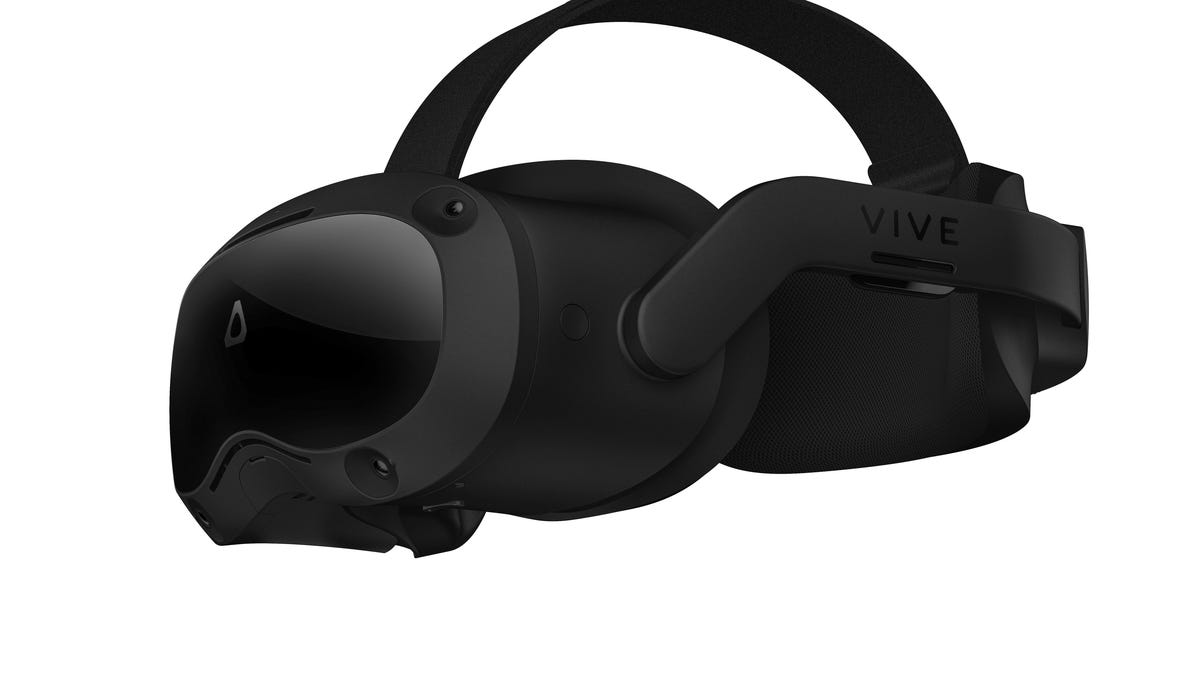The Vive is back: New VR headsets want to be professional alternative to Oculus Quest 2
The new Vive Focus 3 and Pro 2 are business-focused and add big visual boosts in a crowded field.

The Vive Focus 3 is standalone like the Oculus Quest 2, and has the same chip.
Facebook's standalone VR headset, the Oculus Quest 2, doesn't have any real competition if you're looking for a simple VR device at home. But HTC's newest Vive headset, the Focus 3, could provide major advantages for business users. It looks very much like an improved and more flexible version of the Quest 2, with better visuals and expandable storage... and a significantly higher price.
These headsets arrive five years after the original HTC Vive promised to reinvent VR. The original Vive was for everyday gamers as well as businesses, but HTC has since been increasingly business-focused for VR with standalone and PC hardware.
Read more: Mark Zuckerberg on Facebook's VR future: New sensors on Quest Pro, fitness and a metaverse for work
HTC announced its newest business VR headset at a developer-focused ViveCon conference on Tuesday. In addition to the Focus 3, HTC is releasing a new PC-connected Vive Pro 2 headset that shares the same higher resolution and wider field of view of the Focus 3. Both the headsets have 120-degree FOV and combined 5K resolution over both eyes (4,896x2,448 pixels). That's better than either the HP Reverb G2 or the Oculus Quest 2. The interpupillary distance, or IPD, which ranges between eyes, can be adjusted between 57-72mm, which is also more accommodating than the Quest 2.
The Vive Focus 3's cameras can do hand-tracking, eventually. But the headset doesn't have eye tracking.
The standalone Focus 3 is the most interesting: It shares the same Qualcomm Snapdragon XR2 chip as the Oculus Quest 2, but is pushing the chip to a higher resolution output at 90Hz. In many ways, it sounds very much like a professional-grade spin on the Oculus Quest 2. (Facebook is also promising a Pro version of the Quest in the future which may emphasize new sensors and increased performance.)
The Vive Focus 3 also has an extra USB-C port, which Dan O'Brien, HTC Vive's global head of enterprise, says can be used for expansion: adding extra custom-built accessories, or sensors. O'Brien also says the XR2 chip on the Focus 3 comes with extra RAM (8GB) and has a copper heat pipe and cooling fans to push chip performance.
The Vive Focus 3 controllers have a familiar look.
A new set of controllers that come with the Focus 3 look similar to Facebook's Oculus Touch controllers, complete with the same dual triggers, analog sticks and buttons. The controllers charge over USB-C, with 15 hours of battery life promised.
Other notable differences (compared to the Quest 2) include expandable storage via microSD on the standalone Focus 3, and a removable rear battery in the head strap, so extra batteries could be charged up and swapped in. The headset's made of magnesium alloy, and the Focus 3's face piece magnetically snaps on and is designed to be easy to swap and clean. The headset lasts about two hours on a charge, but unlike the Oculus Quest 2 it has a quick charge feature via USB-C that gets to 50% charge in 30 minutes.
The Vive Focus 3 and Vive Pro 2 are available to order now, and are shipping June 24 and June 4. They're definitely not cheap, even if they're business-focused: the Focus 3 is $1,300, and the Pro 2 with controllers and external tracking base stations is $1,400.
One notable absence in both headsets, however, is eye tracking. HTC used Tobii eye-tracking tech in a step-up version of the previous Vive Pro headset, but is leaving the feature out this time. According to O'Brien, the decision was partly price, partly what they see as business interest in the feature. Eye tracking could be added on by someone else, but HTC has yet to figure out any native privacy solutions for it in these new headsets. Also, there isn't any cellular or 5G option at the moment, but that's in the works, according to O'Brien. And, while these headsets could track hands using the external four cameras that are in the headsets, that feature won't be available at launch.
HTC had entered the consumer VR headset space again with the modular Vive Cosmos a few years ago, but it doesn't look like the Cosmos has much of a future as a product anymore. O'Brien says the Cosmos will keep being sold, but that "it didn't hit all the performance metrics we really wanted it to hit," and that HTC may revisit different ideas for that brand in the future.

